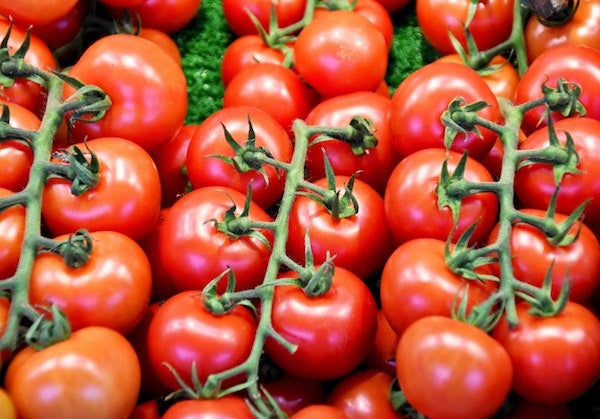Eat your tomatoes!
The first tomatoes originated from Central and South Western America, around present-day Peru. Their history can be traced back to the early Aztecs, around 700 A.D. It is also around this time that Mexicans began the cultivation of tomato plants. The name is derived from the Spanish word tomate.
Health Benefits of Tomatoes
- Skin protection: Lycopene is a carotenoid found in large amounts in the skin of a tomato. It protects the skin against sunburns.
- Cancer prevention: Lycopene prevents cancer of the stomach, breast, lungs, and prostate.
- Cardiac health: Lycopene widens blood vessels, minimizing the risk of heart diseases and stroke. It also increases the production of red blood cells and hemoglobin.
- Eye health: High amounts of betacarotene, lutein, and lycopene in tomatoes eliminate the risk of macular degeneration and cataract.
- Control diabetes: Tomatoes are important for patients with type 2 diabetes as they minimize lipid peroxidation.
- Digestive health: Raw tomatoes minimize cases of constipation while cooked ones increase the chances of indigestion.
Side Effects of Tomatoes
- Skin damage: Tomatoes can cause skin allergy, rash, and discoloration.
- Diarrhea: Tomatoes are common carriers of the bacterium salmonella, which causes diarrhea.
- Allergy: Tomatoes can cause throat irritation, sneezing, and swelling of the face, mouth, and tongue. This is attributable to the high amounts of histamine in tomatoes.
- GERD: Patients who suffer from gastroesophageal reflux disease and digestive stress such as acid reflux and heartburn must avoid eating tomatoes.
- Others: Excessive consumption of tomatoes can also lead to joint swelling and pain, stones in the kidneys, and lycopenodermia.
Favorable Climatic Conditions for Tomato Plant
The ideal temperature for the growth of a tomato plant is between 68-80 degrees Fahrenheit, while the ideal temperature for seed germination is 60 degrees Fahrenheit.
Tomato Seed Collection
You can purchase tomato seeds from a nursery or an online gardening tools store. You can also collect seeds from a tomato to grow new plants. For this, you must follow the step-by-step guide below:
- Step no. 1: Make a horizontal cut on a tomato and divide it into two halves. Now squeeze them both and collect the pulp in a container. Make sure the lid of the container is loose-fitting.
- Step no. 2: Now, you can cover the container, but make sure you don’t seal it to allow air into the mixture of seeds. If you have a lot of containers with similar-looking fluids in them, you could paste a label on the jar with the tomato pulp in it.
- Step no. 3: You must allow the pulp containing the tomato seeds to ferment. To achieve this, you have to place it in a warm place without direct sunshine. Be informed that it will look and smell unpleasant, so keep it somewhere far away.
- Step no. 4: Make sure that you shake the tomato pulp every day. After a couple of days, you will notice a layer of white mold on top of the tomato pulp. The white mold is very useful because it will eliminate the chances of any seed-borne diseases in your future tomato plants.












